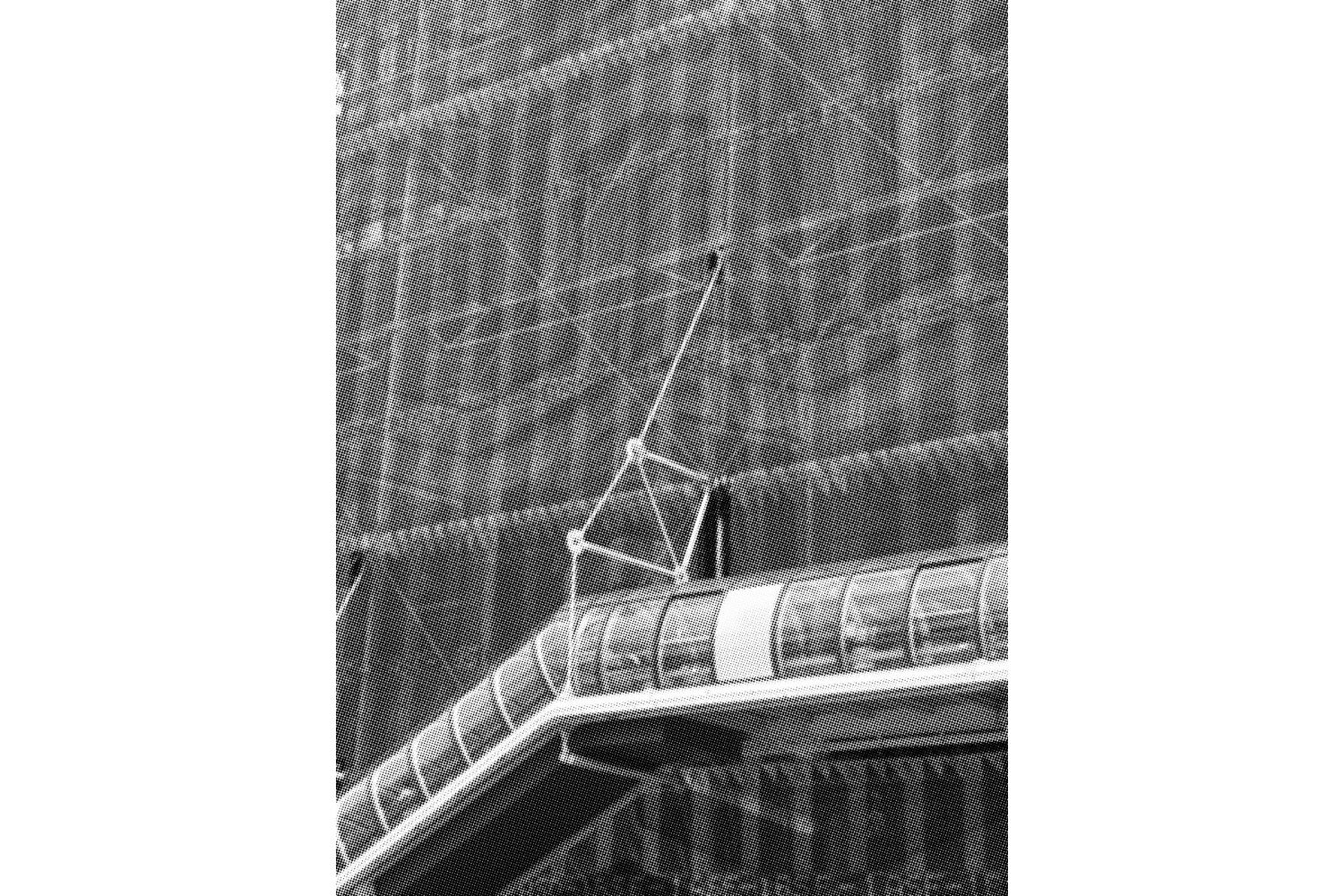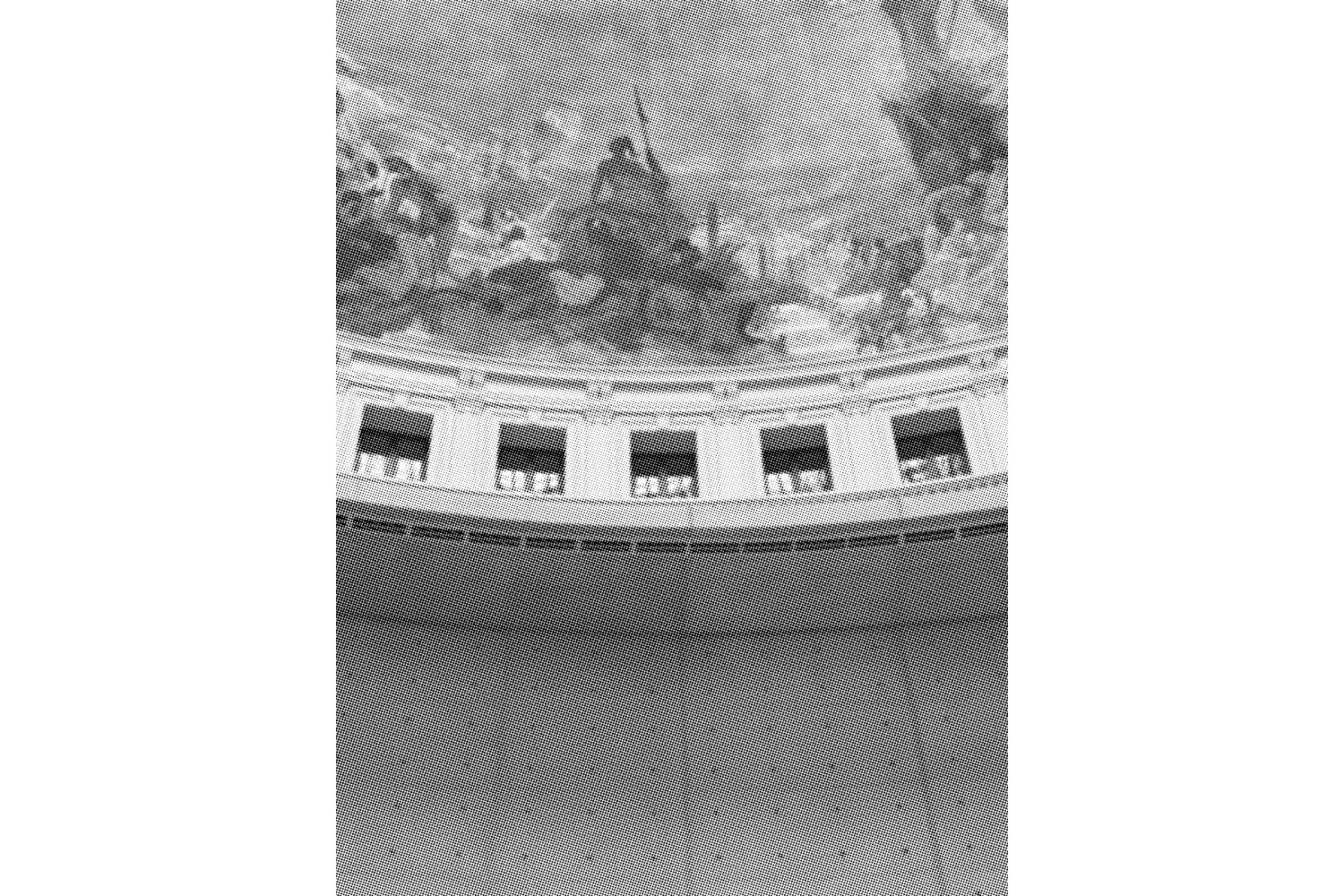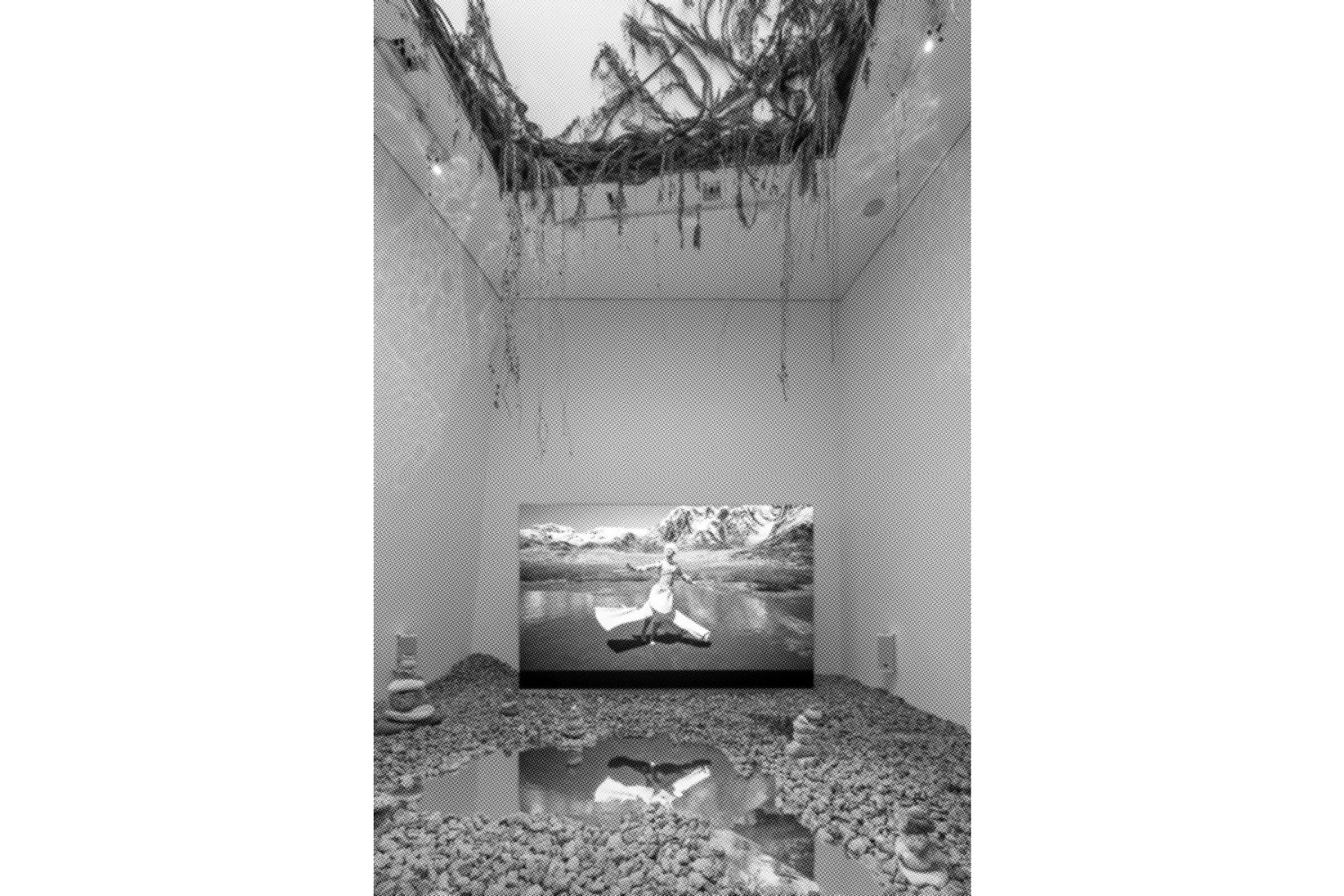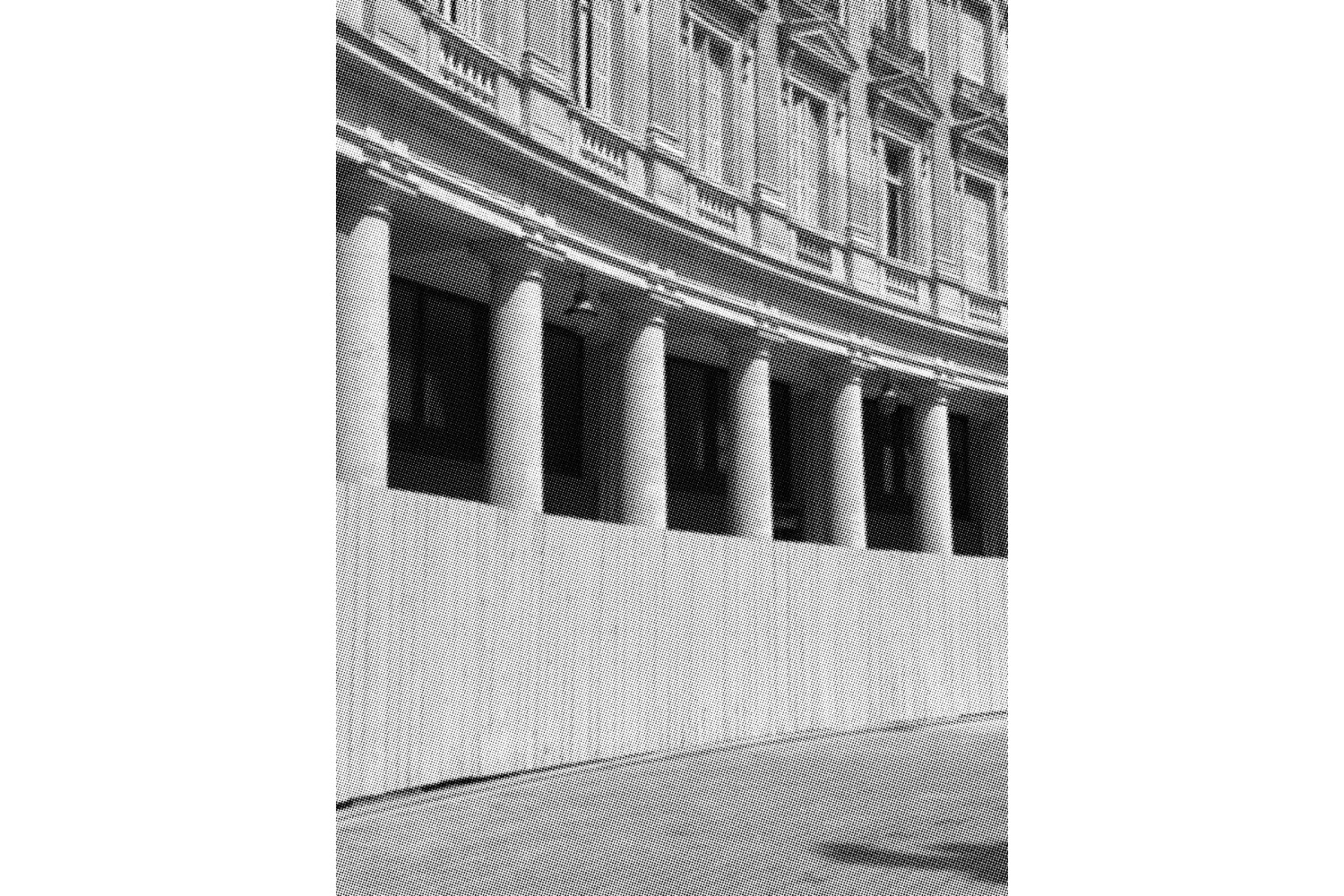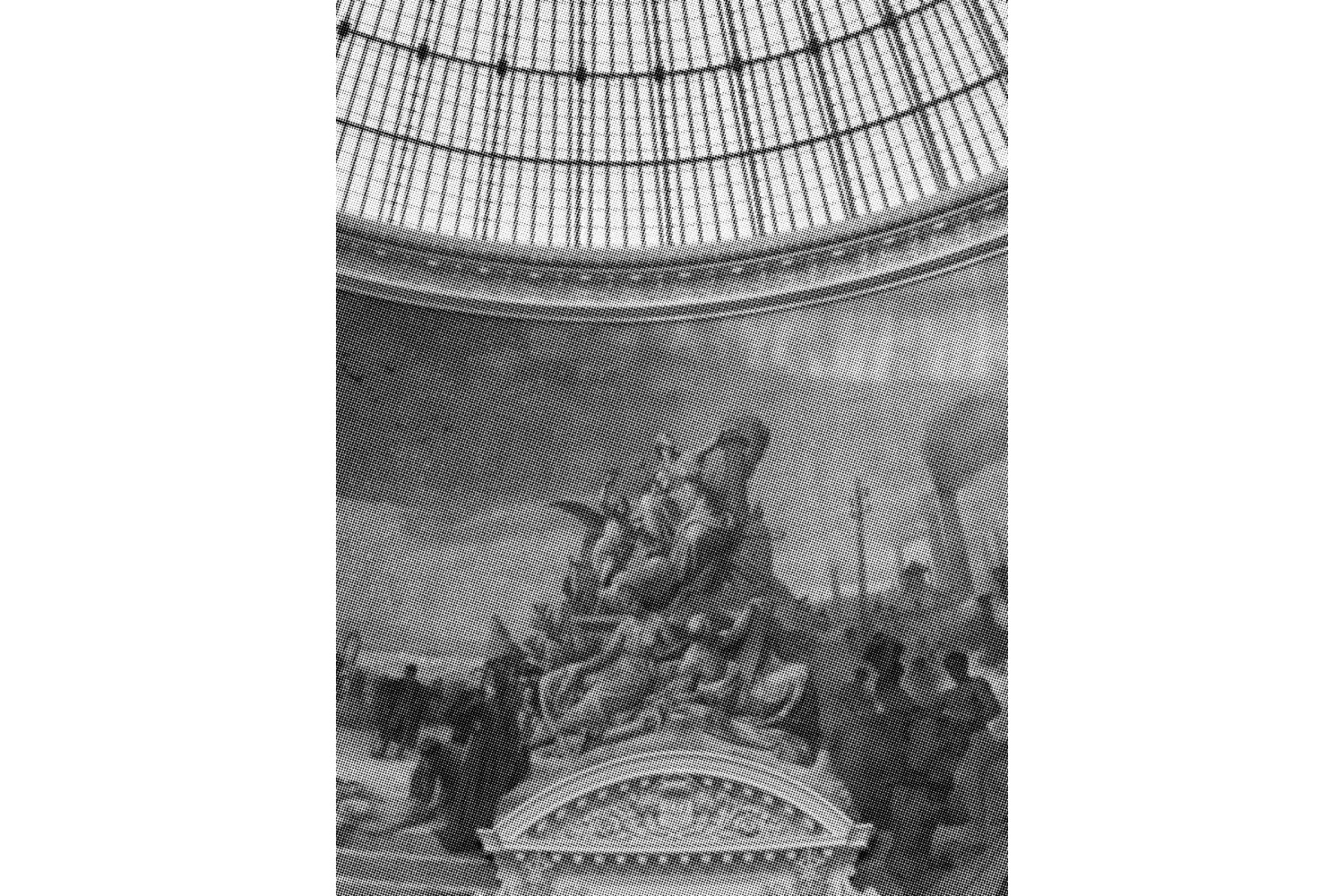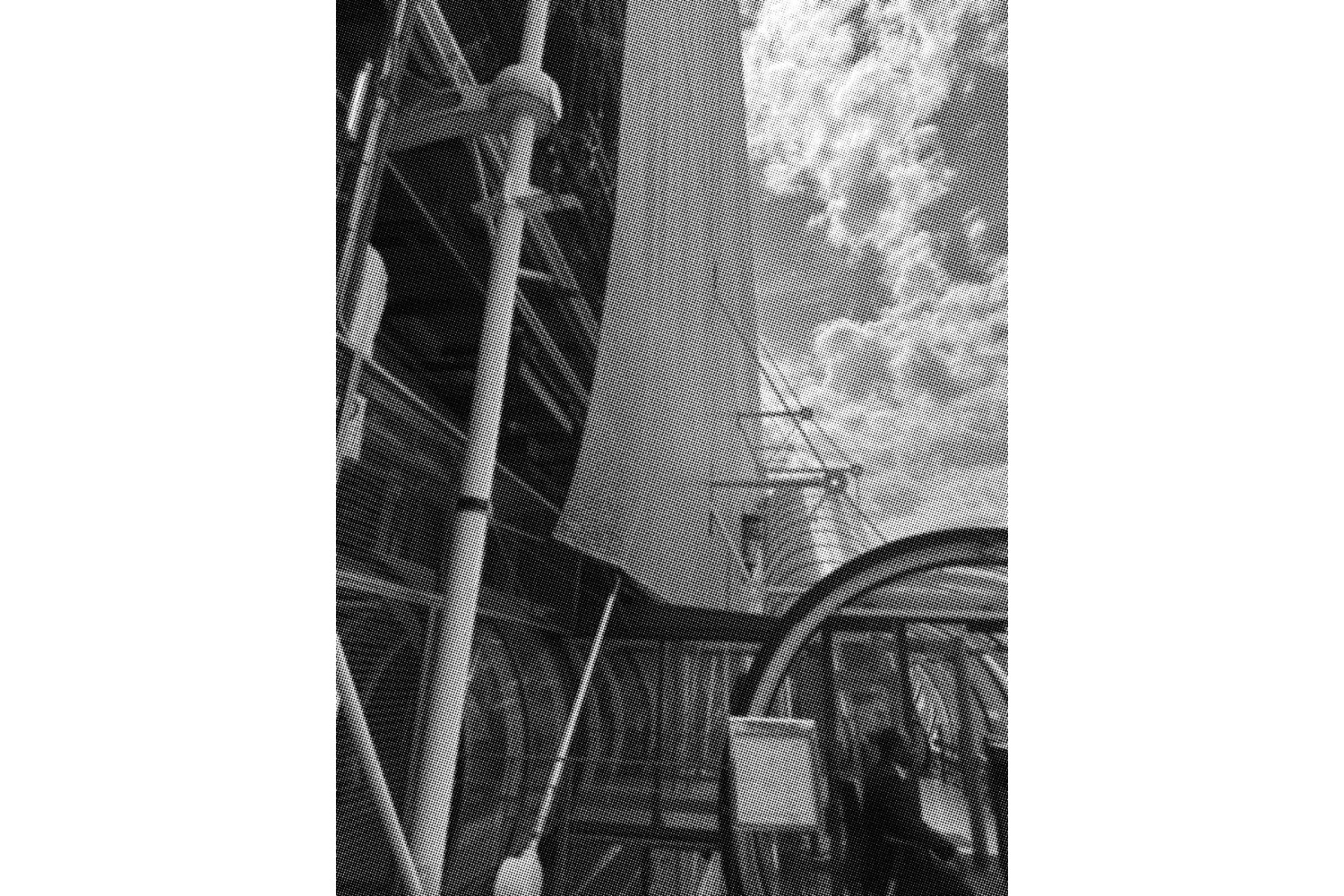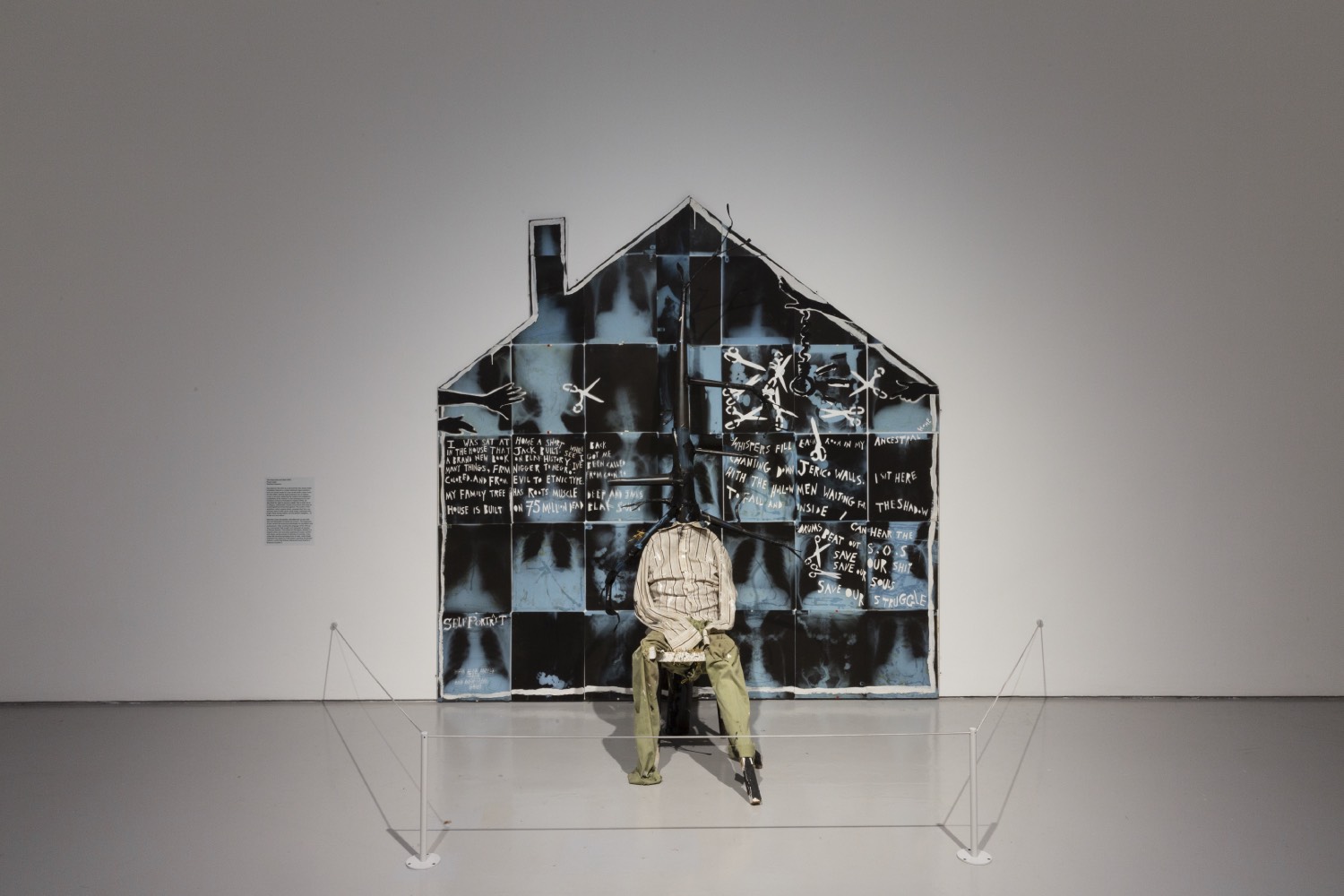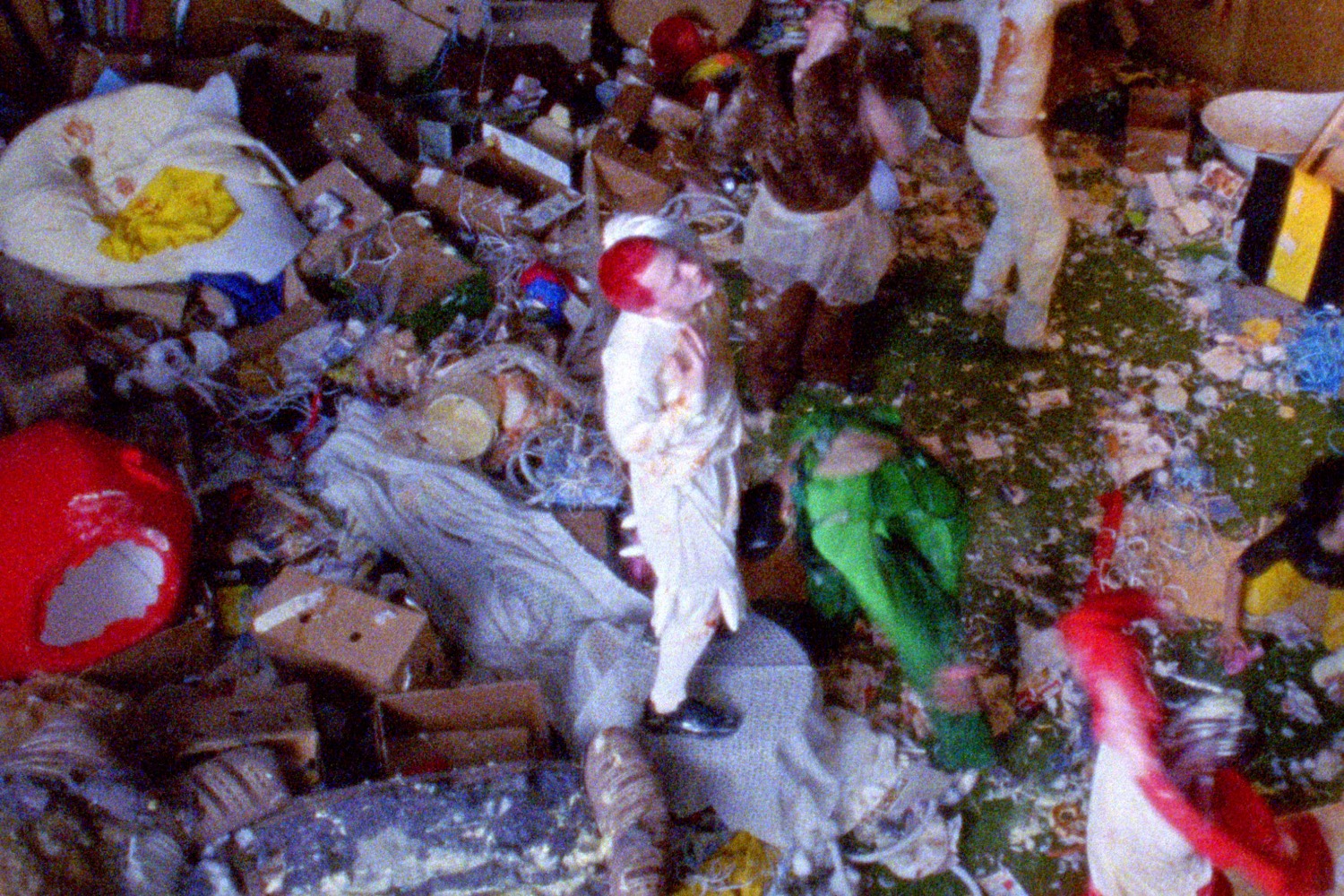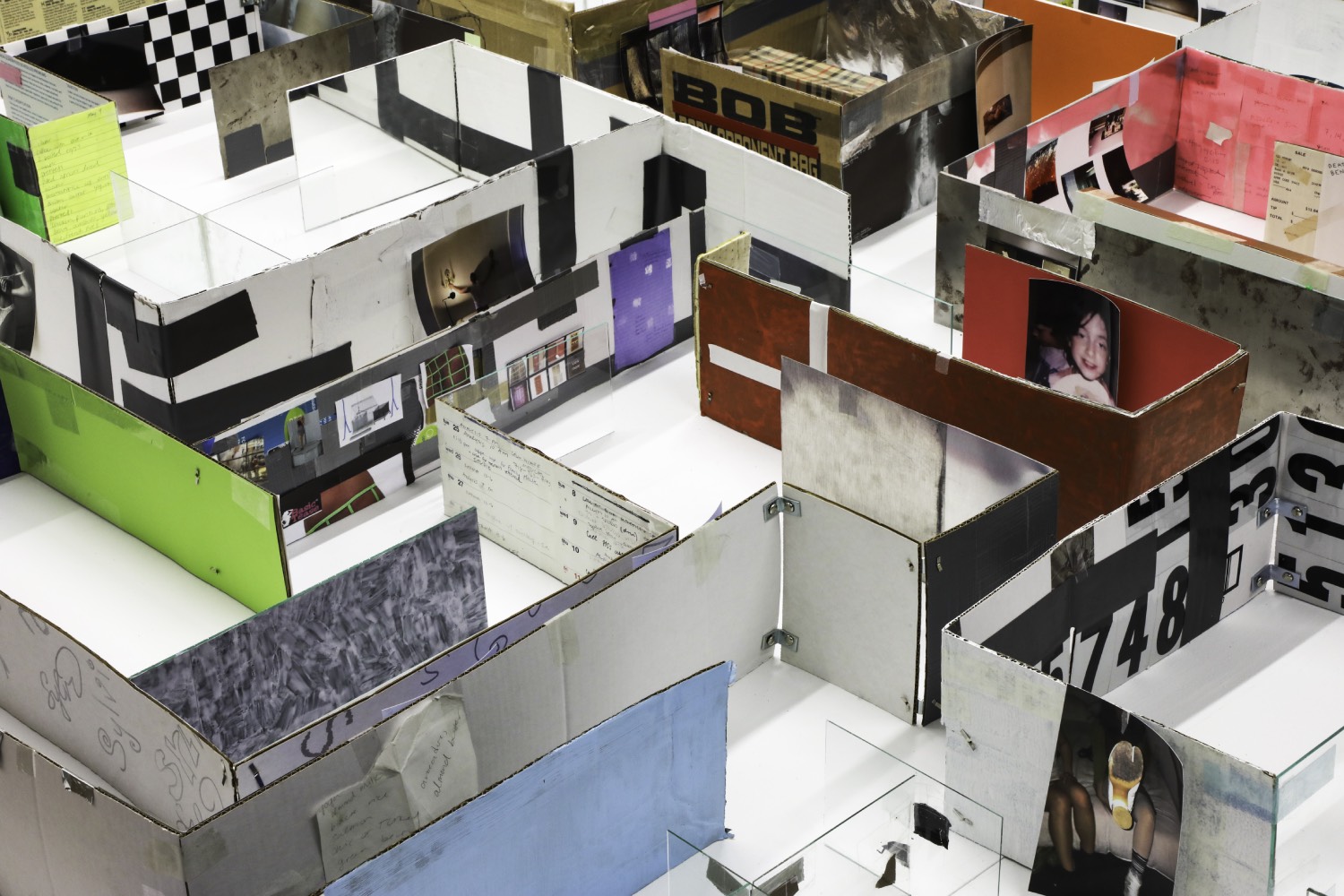For a century, architecture has been a crippled art — every building that has been built proves it; formal combinations in stone seem exhausted, and the ironwork structures that have succeeded them haven’t yet found their form. So while waiting for this form — which will inevitably reflect the image of an epoch of mercantilism and speed […] instead of giving architects monuments to build, which they construct from odds and ends, taking a piece of antiquity here, a bit of the Middle Ages there, and trying to harmonise the whole thing as best they can, would it not be better to employ them to purify, to ennoble the buildings that remain […] by setting them on fire? […] To embellish this hideous Paris which we owe to the lamentable generosity of modern builders, could we not — with all precautions taken for people’s safety — sow a few ruins here and there, burn the Stock Exchange, the Madeleine, the Ministry of War, the Church of Saint Francis Xavier, the Opéra Garnier and the Théâtre de l’Odeon, all prime examples of a nefarious art? Perhaps we would then realise that fire is the quintessential artist of our time, and that the architecture of this century, so pitiful when raw, becomes imposing, almost superb, when it is well-cooked.
– Joris-Karl Huysmans, The Museum of Decorative Arts and Well-Cooked Architecture1
I wonder what Joris-Karl Huysmans — a real amateur of Gothic architecture and a respected expert — would have said about the recent fire at Notre-Dame and its renovation à l’identique? Rebuilding the cathedral exactly like it was before the fire was presented as the only way forward, an obvious consensus, which the French president embraced by committing to and then successfully following through with in just a few years. I think Huysmans would have despised such a hasty decision from politicians, heritage experts, and the general public. He would have probably called it immature and reminded us about the gothic beauty of Notre-Dame’s structure and its ornaments, and then explained why such a renovation strategy is not gothic. He would’ve even deemed this conservation project to be completely anti-gothic, because the urge toward identical renovation is modern and neoclassical. A more gothic approach would’ve been to consciously reject this compulsion to rebuild as-is and to embrace the well-cooked monument as a gothic opportunity. Try to imagine this public announcement: “In the wake of the tragic fire of Notre-Dame Cathedral, the people of Paris have spoken with a collective voice, expressing their will to secure and stylize the burned and collapsed ruins of our cherished Gothic jewel. For the next twenty-five years, extendable only by referendum, these remains will be preserved as a new historic monument born out of accident, tragedy, and combustion. This period will serve as a time to contemplate our fraught relationship with the past and envision the future. Let us use this time wisely, to honor our heritage and to dream the next gothic chapter of the Notre-Dame Cathedral.” Opportunities like this — a burned cathedral! — don’t happen often. The outcome could’ve been truly gothic, perhaps made of fractal vaults, parametric buttresses, 3D printed gargoyles, and shimmering double-glazed windows colored with rare luminous gasses. Who knows? But it is the kind of project that would have induced awe and respect from Villard de Honnecourt, Viollet-le-Duc, Victor Hugo, and Huysmans himself. Historic projects should aim to entertain the dead who are History instead of the people who live to disappear through its cracks. Anyway, what is certain is that the current renovation project will be forgotten, like a bad dream, and this is by design.
The contemporary fate of Notre-Dame is a cautionary tale about Paris’s relationship to its own architecture. Like other large metropolises, Paris is an open-air construction site. Scaffoldings come up and come down, sidewalks are fenced off for weeks, and there is incessant drilling, sanding, and painting. But the difference is hardly ever visible. Paris is in a state of perpetual renovation à l’identique. The city’s architectural efforts are mostly dedicated to looking the same, to timelessness at all costs. In a past-forward Western world subject to increasingly feudal social dynamics, Paris is having a moment because the past is having a moment. The architectural renovation of Notre-Dame à l’identique — unanimously supported by the French State, its taxpayers and corporations, and the global press — sent a clear message to the world about Parisian architecture’s zeitgeist: same is more.
This tendency is visible across all the recent cultural architecture projects in the city. The institutions occupying historic monuments are regularly closed for renovations for several years, like Grand Palais, Musée Cluny, and soon Centre Pompidou. What has been more unexpected, however, is that most of the new private art foundations that have opened over the past few years have embraced this same approach, in spite of representing a small revolution in the cultural landscape for being private institutions. The Pinault Collection at the Bourse de Commerce, Lafayette Anticipations in Le Marais, and the new Fondation Cartier in the Louvre des Antiquaires are, fundamentally, renovation projects à l’identique. Established international architects (Tadao Ando, Rem Koolhaas, Jean Nouvel, to mention just a few) were asked to intervene on existing buildings in close collaboration with French historic preservation architects. The setup is not abnormal, but it could be expected that the commissioners, since they are some of the most sophisticated private organizations, would have preferred opportunities with more daring architectural potential, especially considering the rather future-forward nature of their art collections and the experimental quality of their cultural programs.
“Same-is-more” architecture projects are fundamentally interior architecture projects. The exterior intervention is redone à l’identique as per the guidelines applied to historic monuments. From the outside, brand new projects are invisible. The old Parisian stone dominates, and barely any details, aside from some signage, reveal the newness of the building. Cartier was recently called out by conservation watchdogs because the transparent glazed canopy on the northern facade was not invisible enough. Some specific details, though, betray the reality of these renovations: windows are made of ultra-clear high-efficiency glass with thermal breaks; lifts and ramps are added for more inclusive accessibility; new technical components can be seen, including HVAC, security cameras, metal detectors, LED lights, and the ubiquitous presence of Wi-Fi. The deeper one moves into the projects, the less historic they are. Courtyards are transformed, created, or augmented with new glass ceilings and mechanical floor systems. Very contemporary building materialities interact with sections of historic décor, which is meanwhile juxtaposed with very contemporary artworks, sometimes in questionable ways, like in the case of the colonial ceiling of the Pinault Collection. This culture of renovations à l’identique is strange. There is a gradient from outside to inside. It moves from a polite, sensible, by-the-book take on history toward eclectic spaces that are ultimately very baroque and neoclassical in a steampunk way. Could we call it “samepunk”?
The issue is deeper though. These new buildings are good in the sense that they are perfectly built; the integration of old and new is actually careful and refined. But is it good architecture? Are they good museums? The exhibition spaces are state-of-the-art, but many are awkward, without flat walls, with low ceilings or glass walls. The circulation in these spaces tends to be confusing, and getting lost is a common trope of the museum experience they offer. So, are these buildings perfectly designed compromises? Perhaps the point was art and not architecture; but then why embark on this tremendous architectural effort? Less would have been enough. In these projects, the clearest and most powerful architectural gesture is the wish to disappear from history. These masterful à l’identique renovations are flawless and obsessional to the point of quasi-metaphysical decadence. The contemporary architectural gestures get lost in the preservation of the historic buildings. The priority was the past, and the present was a second thought; heritage architecture won over contemporary architecture.
There are some exceptions, or so it would appear at first glance, to the “same-is-more” ethos, mainly because they are so weird and disturbingly far away from it, like Frank Gehry’s projects for Fondation Louis Vuitton and LUMA Arles. But these “weird-is-more” buildings are just the B-side of “same-is-more.” They are built to prove that the alternative is absolutely dysfunctional and repulsive, which cleverly reinforces the status quo.
Indeed, these buildings by Gehry are appreciable for being completely, intentionally abject. Designed according to an active rejection of composition, neither exteriors nor interiors make any sense visually, materially, structurally, or functionally. They are a wonderful demonstration of the fact that all attempts at architecture are irrelevant because humans are essentially rodents capable of inhabiting any cave-like space. The greatest part of the projects are the exhibition spaces, perfect white cubes galleries floating between chaotic transitional spaces. If the integrity of these spaces survives in Arles, the radical confusion of Fondation Louis Vuitton is so intense that it spills into the pure white-cube galleries like a drippy bucket of tar on a white carpet. Architecture brings art down with itself. But the chaos is intentional. It is meant to create unexpected outcomes, induce chance encounters, and generate weird meanings in a tired, late-capitalist way, which also fails flatly, only making the point even stronger. This architecture is the maximalist embodiment of “weird-is-more,” with all the attributes of what could be called troll architecture (in the internet sense) for being driven by a privileged nihilism and a no-budget, no-timeline urge toward total nonsense.
Among contemporary architecture projects in Paris, the temporary ones are the most interesting. Paris’s love for timelessness only equals its love for temporary weirdness. Building — and especially dismantling — temporary installations is the performance of permanence and conservation par excellence. The uglier, more dysfunctional, and more underwhelming the temporary structure is, the more value is transferred toward what already exists, the more the contemporary fails to deliver its rational promises, and the more rationalized the obsession with the past becomes. It is about letting the enemy make mistakes. The Grand Palais Éphémère, which hosts Art Basel Paris, is functional and actually doing a decent job at replacing the historic Grand Palais while it is being renovated à l’identique. Yet it is so underwhelming as a building that it will inevitably be removed when its time is served. Another example is the temporary building installed in front of the entrance of the new Fondation Cartier to house the construction workers’ offices during the à l’identique renovation of Louvre des Antiquaires. The three-story mirror cube disappears into the perfect reflections of the historic facades that surround it. The genius here is to repeat the repetition of Parisian facades in order to become invisible. The camouflage is to create more of the same. It’s a pity that this installation is made of prefabricated building modules and will therefore be dismantled too. I suspect that, right now, it is the most beloved contemporary building in Paris: invisible, impermanent, weird, and submissive to historic buildings.
With the Olympics, many temporary structures appeared in Paris over the summer. Many will eventually be removed and some may stay, because they were good ideas in one way or another. A promising one is the giant LED screen that was recently installed on the main facade of Centre Pompidou. It is pertinent in so many ways without being dated, quoting the original proposal by Renzo Piano and Richard Rogers for the Pompidou presented in the 1971 architecture competition, which was never realized, while giving Paris a LED screen that competes with the most illuminated Asian megalopolis and providing shade to the Western facade that tends to overheat. It is almost certain that the original architects would love for this temporary media installation for the Olympics to be extended throughout the renovation of the building (from three to five years) and then perhaps become permanent by virtue of being extended forever.
It would be wrong to say that this tension between permanence and temporariness is a symptom of our time. The Paris we know has mostly been built according to this ethos over the last quarter millennium. The truly contemporary projects of the time were temporary at first, often leftovers from world exhibitions — which played a comparable role to today’s Olympics in terms of enabling semi-unreasonable architecture projects that would otherwise not happen. The Grand Palais, Trocadéro, Palais de Tokyo, and the Eiffel Tower are some of the lucky few temporary-turned-permanent projects of these times (notice that most of them are not too neoclassical). But more than any other force, the city of Paris has been built by a desire to reproduce a lost past. Haussmannian Paris was a neoclassical samepunk project, traversed by new technologies “of mercantilism and speed,” yet so conservative at its core. Monuments like La Madeleine, Opéra Garnier, Bourse, and Gare d’Orsay worked so hard to look old and from another time when they were built. The recent art foundations that have opened in Paris abide by this Parisian fin de siècle neoclassicism. As per Huysmans’s recommendations, it would have been refreshing to burn these monuments down with intention, in order to wait for a truly new architecture to emerge from the collective contemplation of their ruins. Let’s see how long this artificial déjà vu can be preserved, because the more astute students of History know that everything must change for everything to remain the same.

